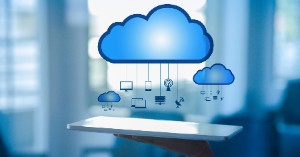Why Cloud Based Business Software Is Better Than On-Premise
by Black Ink Team

Sales representatives and sales managers perform better when the data they need and the software they use is available in the cloud. To understand why, it is important to first learn the distinction between running an application or saving documents 'in the cloud' versus doing so on-premise.
Anything that is hosted on a remote server and accessible via an Internet connection (and with the right credentials) is technically in the cloud. The term is used to emphasize the large, ever-present nature of networked web servers today. Cloud applications can be as simple as static databases used for storing basic information or they can be complex systems capable of computing massively sophisticated algorithms. An example of a document in the cloud might be an Excel file saved in your Google drive, which is accessible from any device that has access to your Google account via the web.
The alternative to cloud storage is saving data 'on-premise' - meaning that your document or application is either on your physical device or in a local server at your home or business. An example here might be an Excel file saved on your laptop, which is only accessible from that physical device. With this distinction in mind, there are many advantages to cloud computing over on-premise solutions. For one, on-premise is limited by nature to its device, which poses a host of problems: Small portable devices like laptops and smartphones can easily get lost or destroyed and their limited power mean they are more vulnerable to hacking. Furthermore, their storage capacities and computing capabilities are relatively limited. Desktop computers offer a bit more security, but relying on them means you must strand your data whenever you go on vacation or are traveling on the road. In short, web servers store more data, generate calculations faster, and grant you access anywhere.
In contrast to on-premise, cloud applications provide greater processing power and ease of access to data, since large remote servers do all the work and serve up to you wherever you like. They also provide the same - or, arguably, better - cybersecurity than offline systems by tracking and monitoring the IP addresses of individual users. Also, they give more control to people in management roles. Based on your account's privileges you can be given or denied access to certain information, making it easier for territory managers to assign leads. Additionally, the time gets logged whenever users sign in/out so managers get to see exactly how much work their team is doing. An IP address is like a physical address, except it is tied to a device instead of a location. As an added layer of security, you can set cloud software apps to only allow users to logon from certain IP addresses, or stop users' sessions when they logon with multiple devices.
Once you have moved over to the cloud, however, it's important to note that not all cloud applications are created equal. In any sales department, there is a need for a place to keep lots of information in addition to a need for vast computing capabilities. Every single customer interaction can tell you something valuable, but in-depth analysis requires complicated processes. The best solution for organizations is to implement a cloud-based platform which delivers both space and power, since doing so removes the need for any intermediate copying steps. To illustrate the benefit, if you wanted to conduct analysis on a hundred gigabytes of data but your web-based storage won't speak directly to your web-based analysis tool, you would have to spend hours manually downloading data from one separate system and uploading to another. With space and power under one roof in a single platform, you could run the same analysis many times over.
Cloud based business software, such as CRM or SaaS analytics solutions, can provide that space and power for a faster, more useful, and more secure workflow experience. Instead of only being able to work on certain devices and/or in certain locations, professionals can work wherever they have a connection. The storage capacity and computing speed are much greater, and you are given monitoring tools which team leaders keep track. Working off the same data and using the same tools makes it easier for team members to collaborate. And lastly, if you lose your device or if it breaks, none of your data will be lost.
